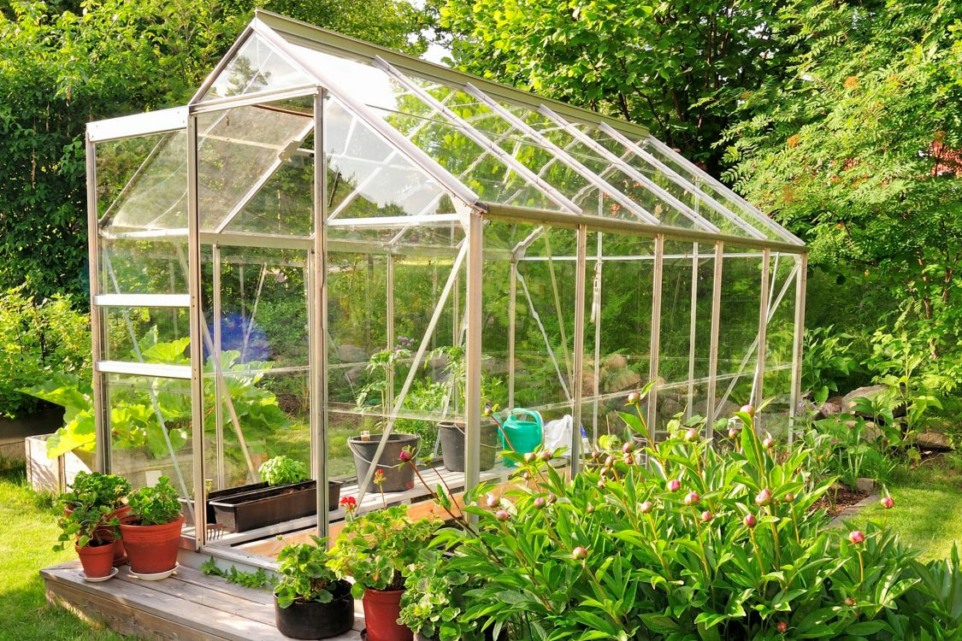How to Heat a Greenhouse in Winter for Free: Sustainable Solutions Explored
Harnessing Solar Power
Thermal Mass: Nature’s Heater – Nature’s Radiator
Thermal Mass: Picture strategically placed water-filled containers (5 gallon, 10 gallons or 50 gallons) inside your greenhouse. The larger the size of the containers and the quantity of containers you use, the more heat it stores During the day, these containers absorb sunlight, converting it into heat. As the temperature drops in the evening, the stored heat is released, maintaining a steady and warm environment for your plants. This natural method not only requires minimal intervention but also illustrates the ingenious use of nature’s own principles to provide consistent warmth without any added cost.
Passive Solar Heating Design
Passive Solar Design: Consider a greenhouse strategically positioned to capture the maximum amount of sunlight. The orientation, along with materials like thermal mass objects, ensures optimal absorption and retention of solar heat. A passive solar design takes advantage of the greenhouse’s layout and natural elements, minimizing the need for additional heating systems. This practical example highlights how thoughtful planning can harness the sun’s power effectively, contributing to a warmer and energy-efficient greenhouse.
Composting for Heat
Composting System: Imagine a composting system integrated into your greenhouse. Kitchen scraps, yard waste, and organic materials are diligently collected and placed in a composting bin. As these materials decompose, they generate heat, effectively warming the surrounding air. This heat contributes to maintaining an optimal temperature for your plants, and once the composting process is complete, you’re left with nutrient-rich compost to enhance your soil’s fertility. It’s a self-sustaining cycle where waste turns into warmth and valuable organic matter, It’s a win-win!.
Insulation with Recycled Materials
Recycled Insulation: Repurposing old blankets, bubble wrap, or discarded carpeting as insulation materials not only prevents heat loss but also exemplifies a commitment to sustainability. Envision a greenhouse lined with these recycled materials, creating a thermal barrier that traps warmth inside. The materials, otherwise destined for landfills, find a new purpose, showcasing how simple, low-cost solutions can contribute to an eco-friendly and warm greenhouse environment.
Embrace Windbreaks
Windbreaks: Visualize a row of strategically planted evergreen trees on the windward side of your greenhouse. These trees act as natural barriers, deflecting cold winds away from the structure. This not only reduces heat loss but also creates a microclimate within the greenhouse. Additionally, recycled materials, such as old doors or windows, strategically placed as windbreaks, serve as effective shields against chilling gusts. This practical application demonstrates how utilizing nature’s defenses and repurposing materials can be both functional and sustainable.
Utilize Heat from Household Activities
Household Heat Redistribution: Envision a simple system where warm air generated during daily activities in your home is directed into the greenhouse. During colder periods, when you’re cooking or doing laundry, a ventilation system redirects the warm air into the greenhouse space. A good example of this will be figuring out a way to use your dry heat to heat your greenhouse. This straightforward approach repurposes excess heat that would otherwise be wasted, providing a natural and cost-free supplement to your greenhouse’s warmth.
Utilizing Natural Airflow
Natural Airflow: Picture a greenhouse with well-placed vents and windows that are strategically opened during the day. This allows warm air to circulate naturally, preventing stagnation and maintaining a comfortable temperature. Come evening, the greenhouse is sealed, trapping the accumulated warmth. This practical approach not only utilizes the greenhouse’s design but also showcases how controlled natural airflow can be a simple and effective way to regulate temperature without relying on external sources.
Cold Frames and Row Covers
Cold Frames and Row Covers: Envision extending your growing season with cold frames and row covers. A cold frame, constructed from recycled materials, acts as a protective barrier against harsh weather conditions. Placed over rows of delicate plants, it traps heat, creating a microclimate that shields them from the cold. This practical application of affordable structures demonstrates how minimal investments can significantly enhance insulation, allowing for extended and successful cultivation.
Conclusion
What I have provided above are some of the ways you can heat your greenhouse, you can research for more ways and why not come up with yours base on yours situation, and don’t forget to experiment different thing to see which provides the best result for you. Heating your greenhouse for free isn’t just a lofty idea; it’s a tangible and rewarding goal. By exploring these practical examples, from solar power utilization to natural airflow strategies, you can create a sustainable and warm haven for your plants during winter without straining your budget. Implement these detailed strategies, and witness your greenhouse thrive without costing you a dime while making a positive impact on the environment.





